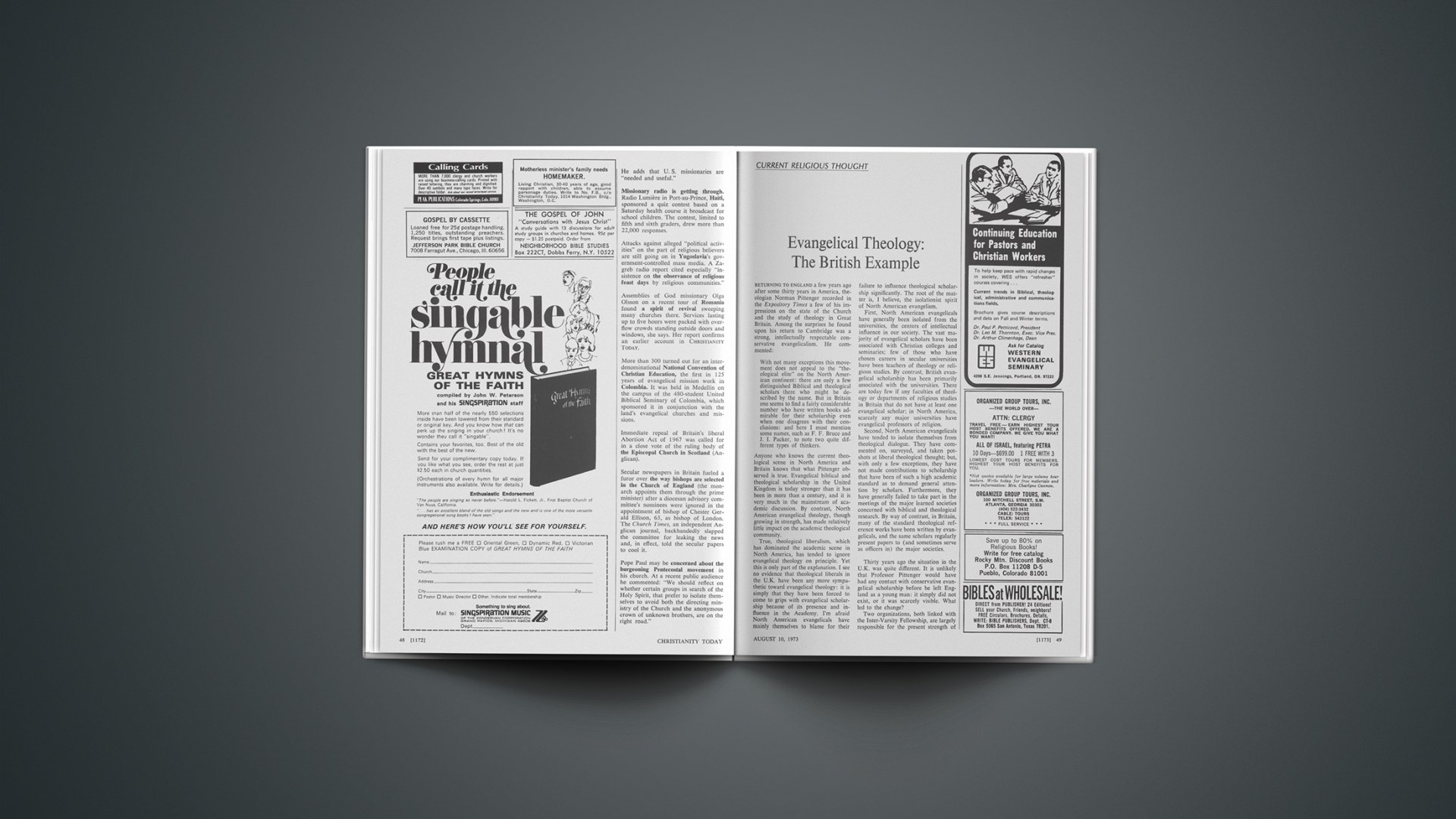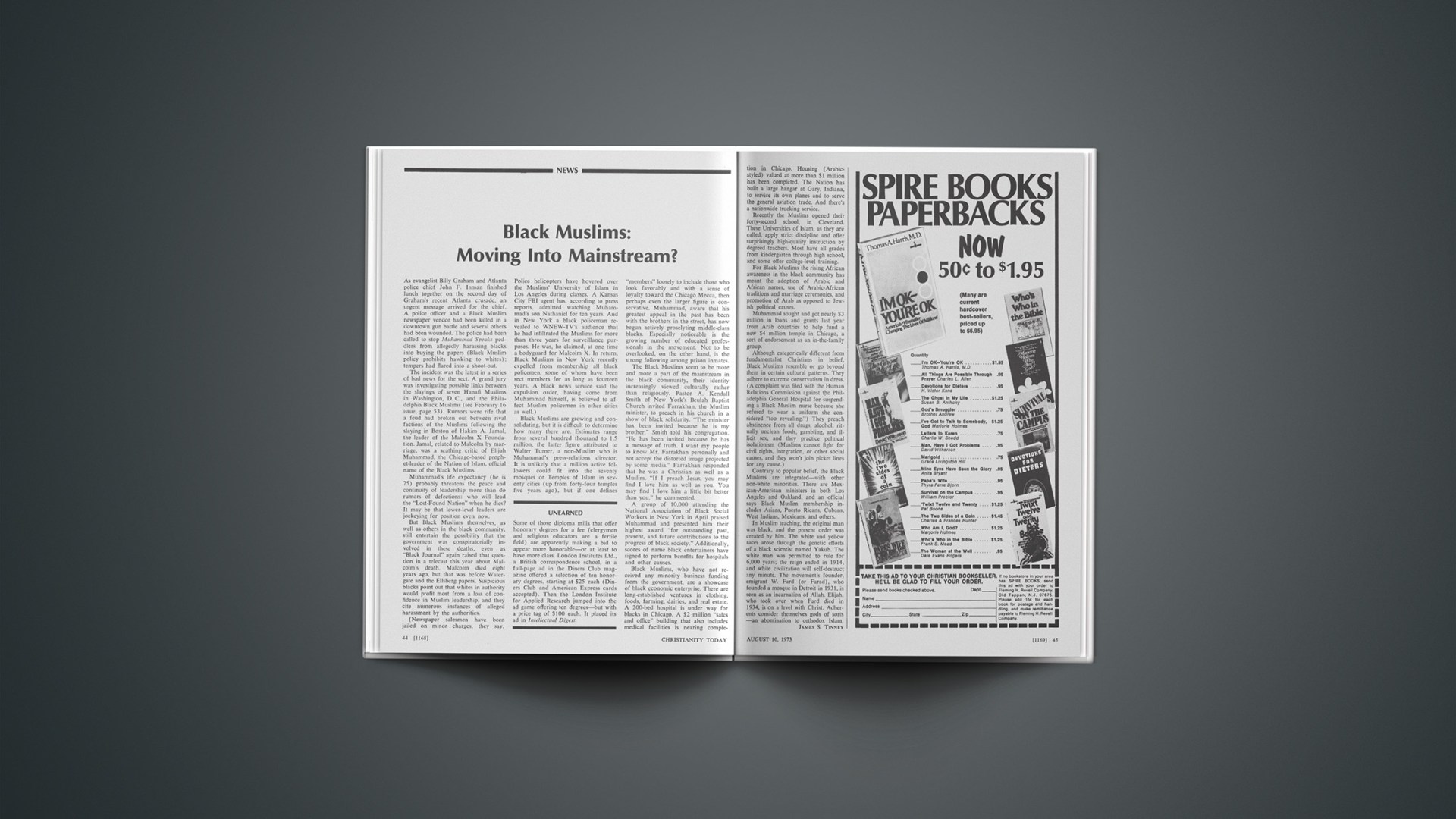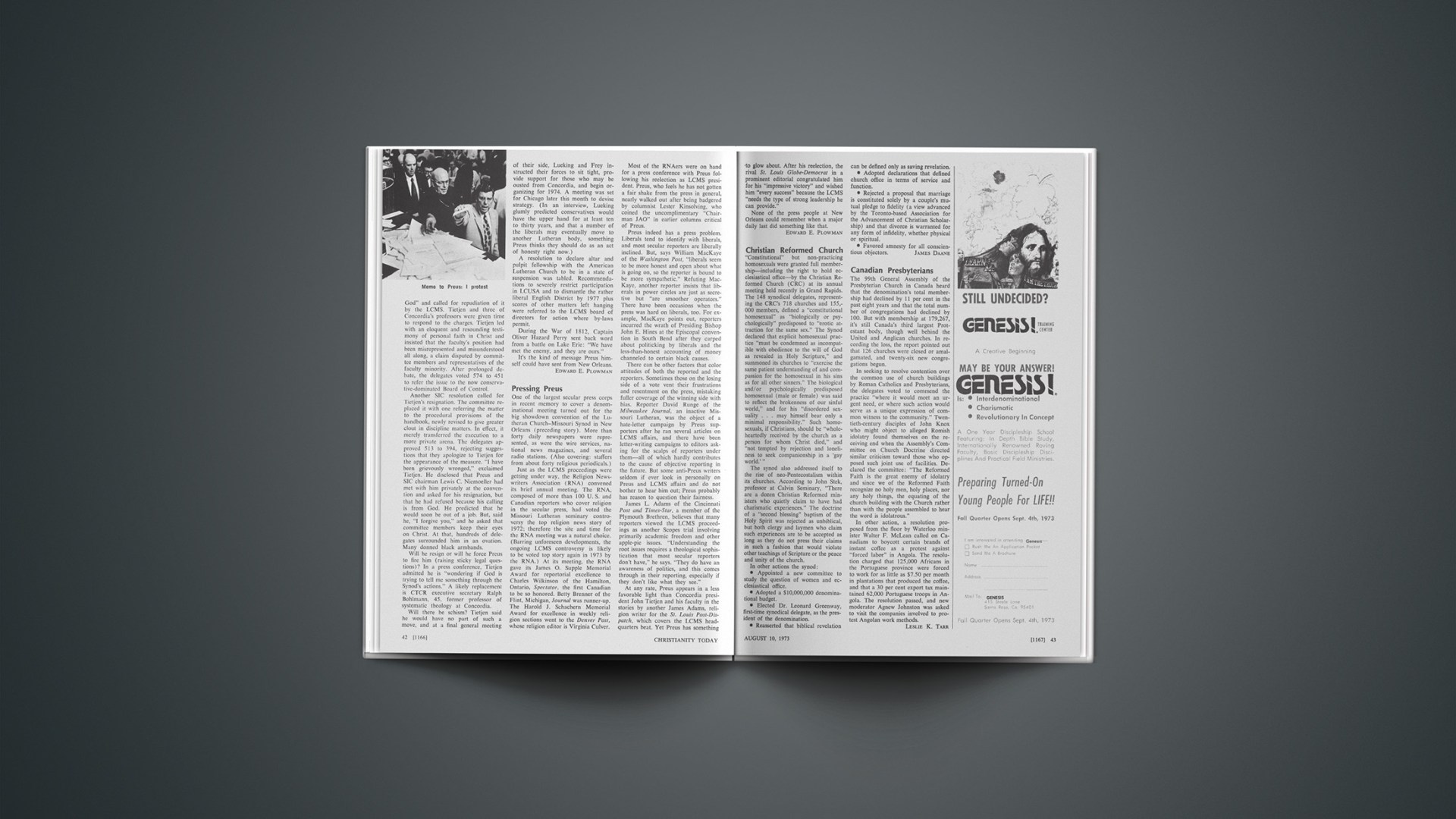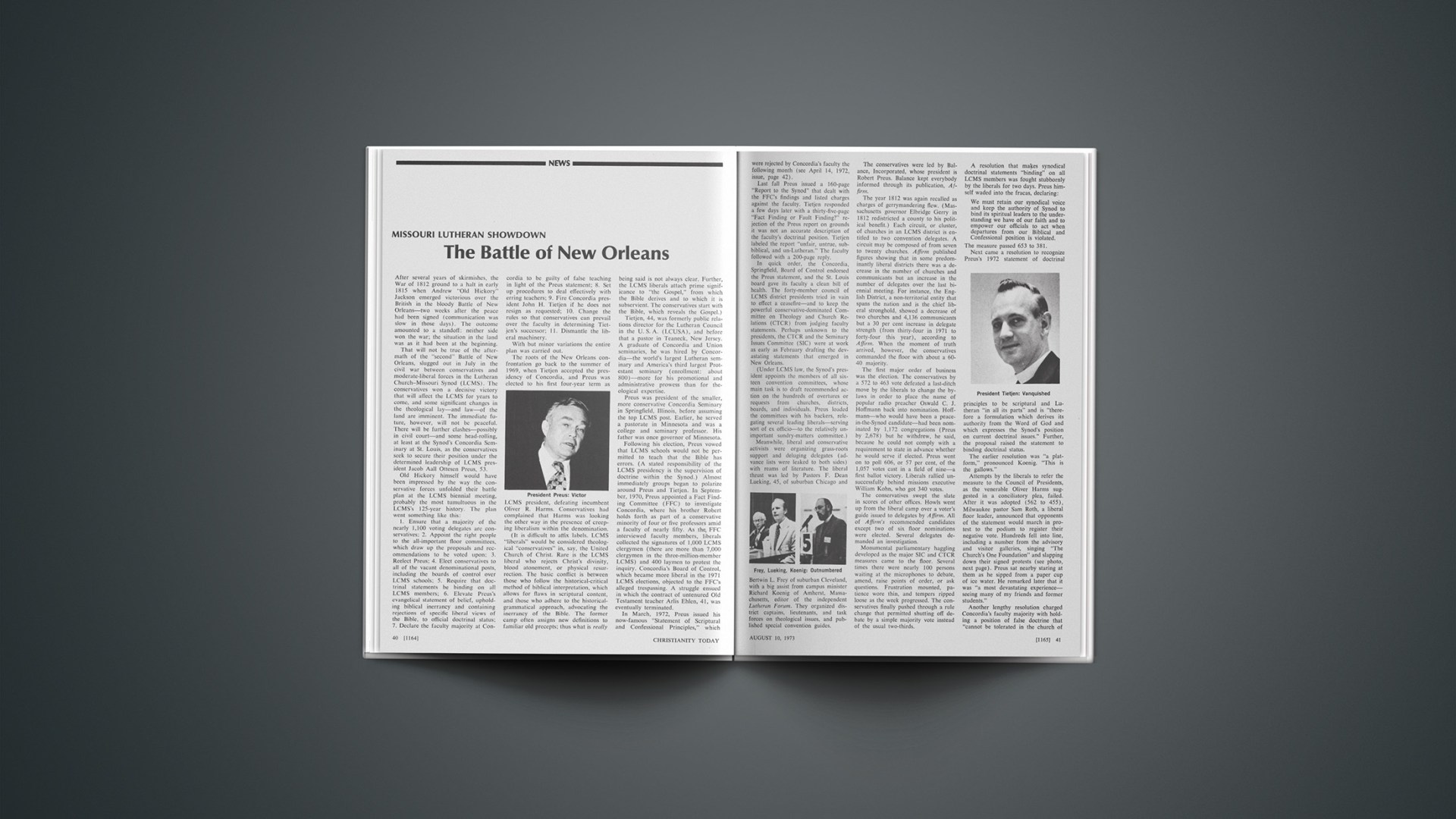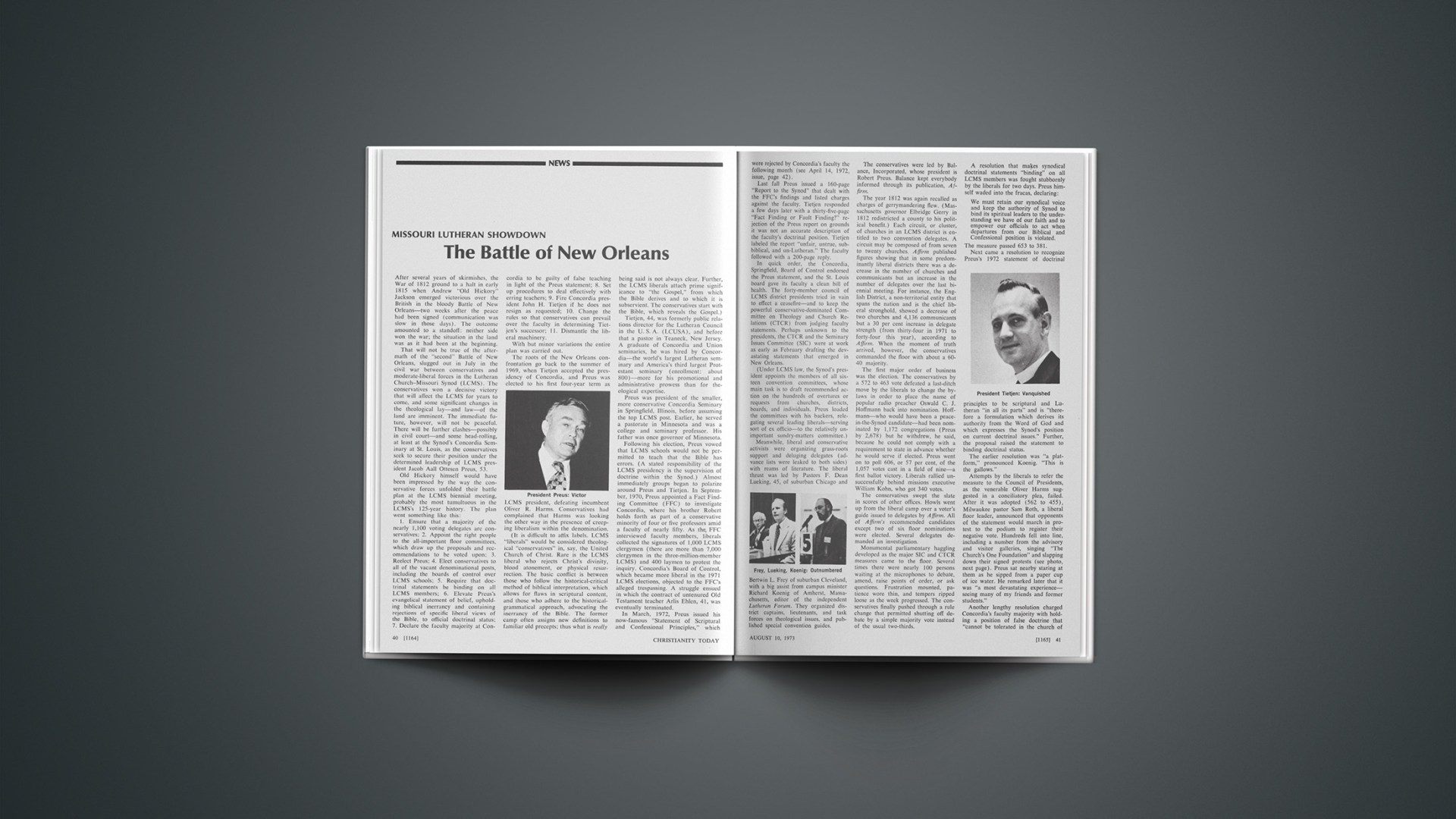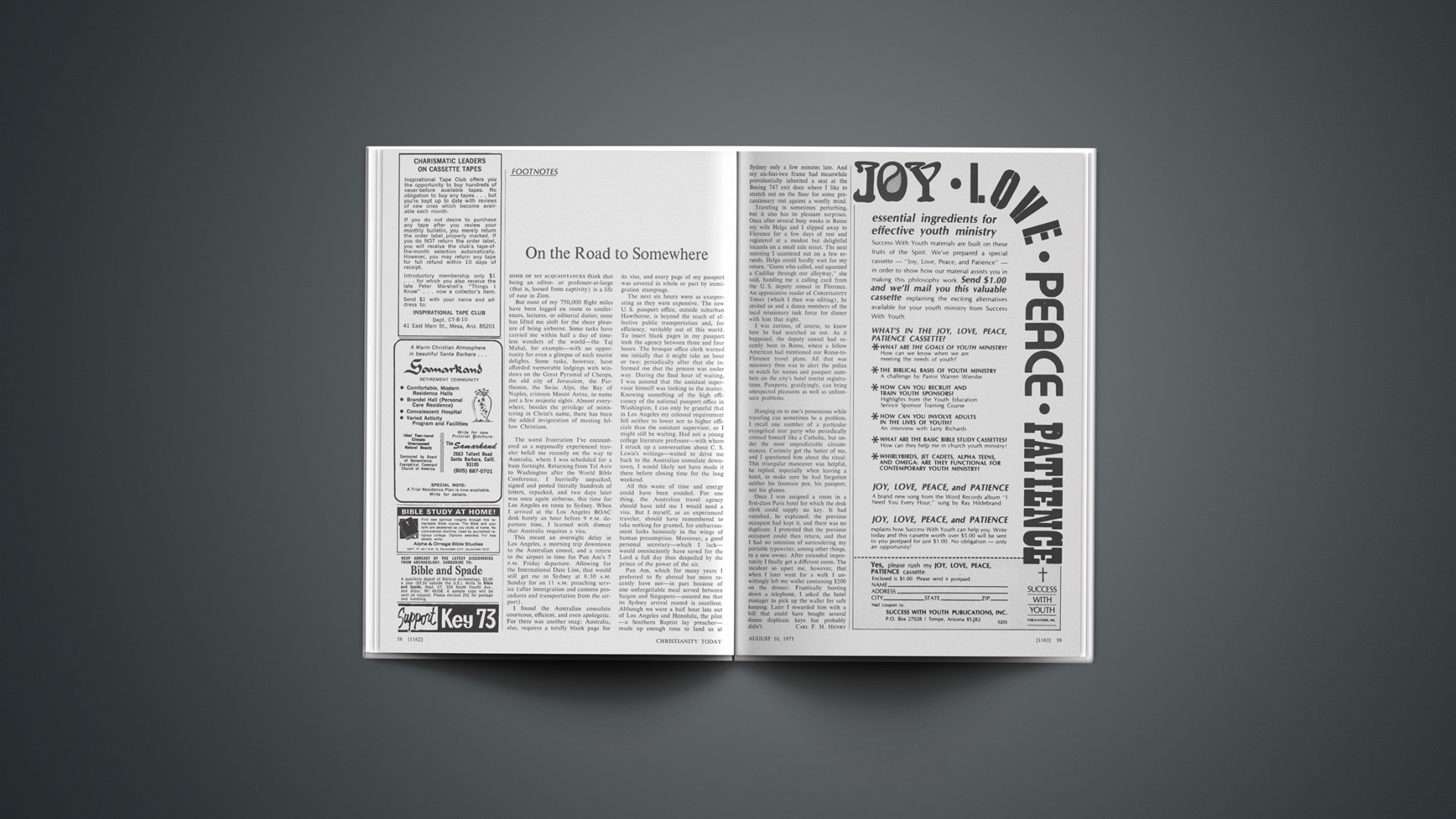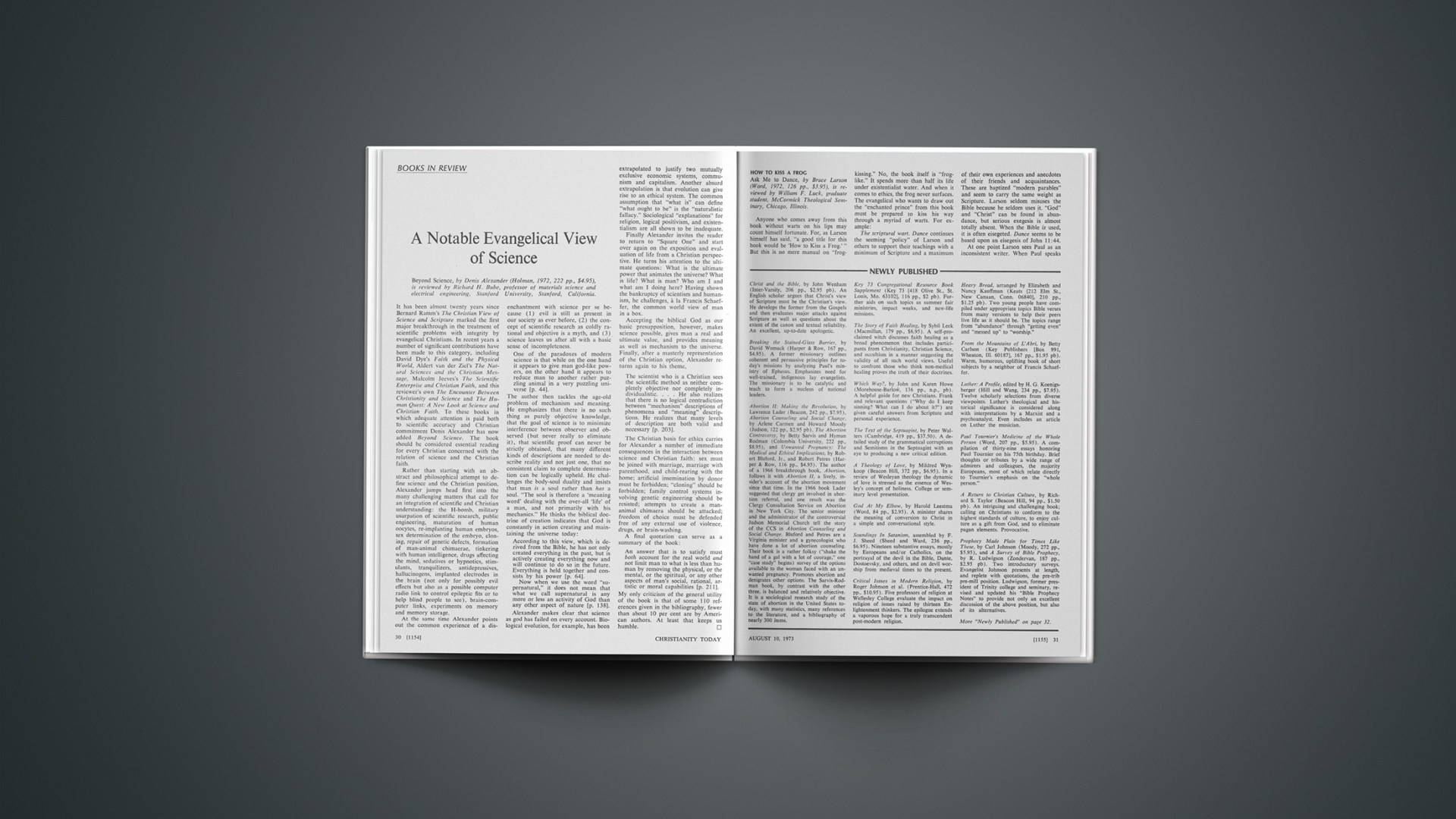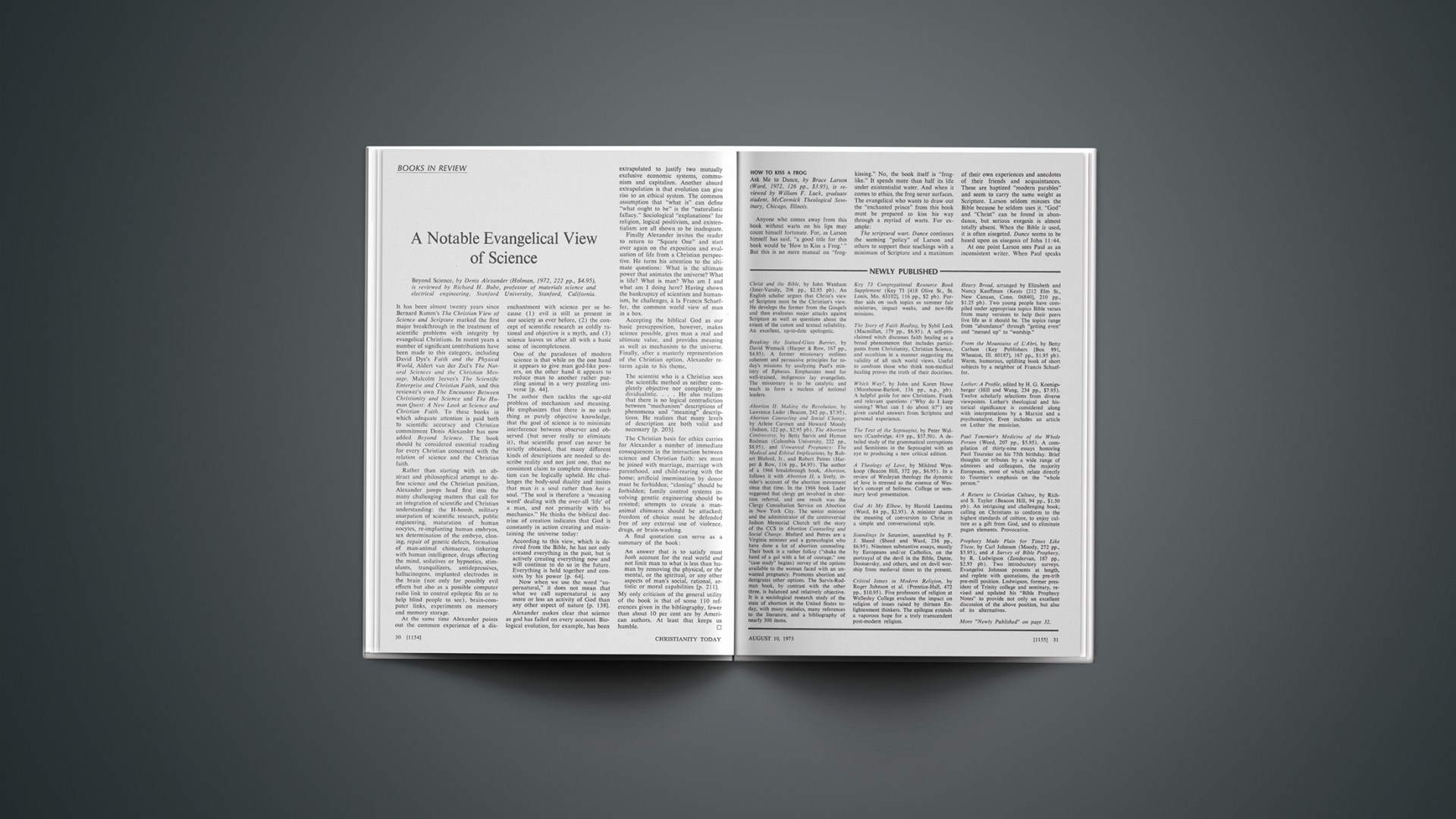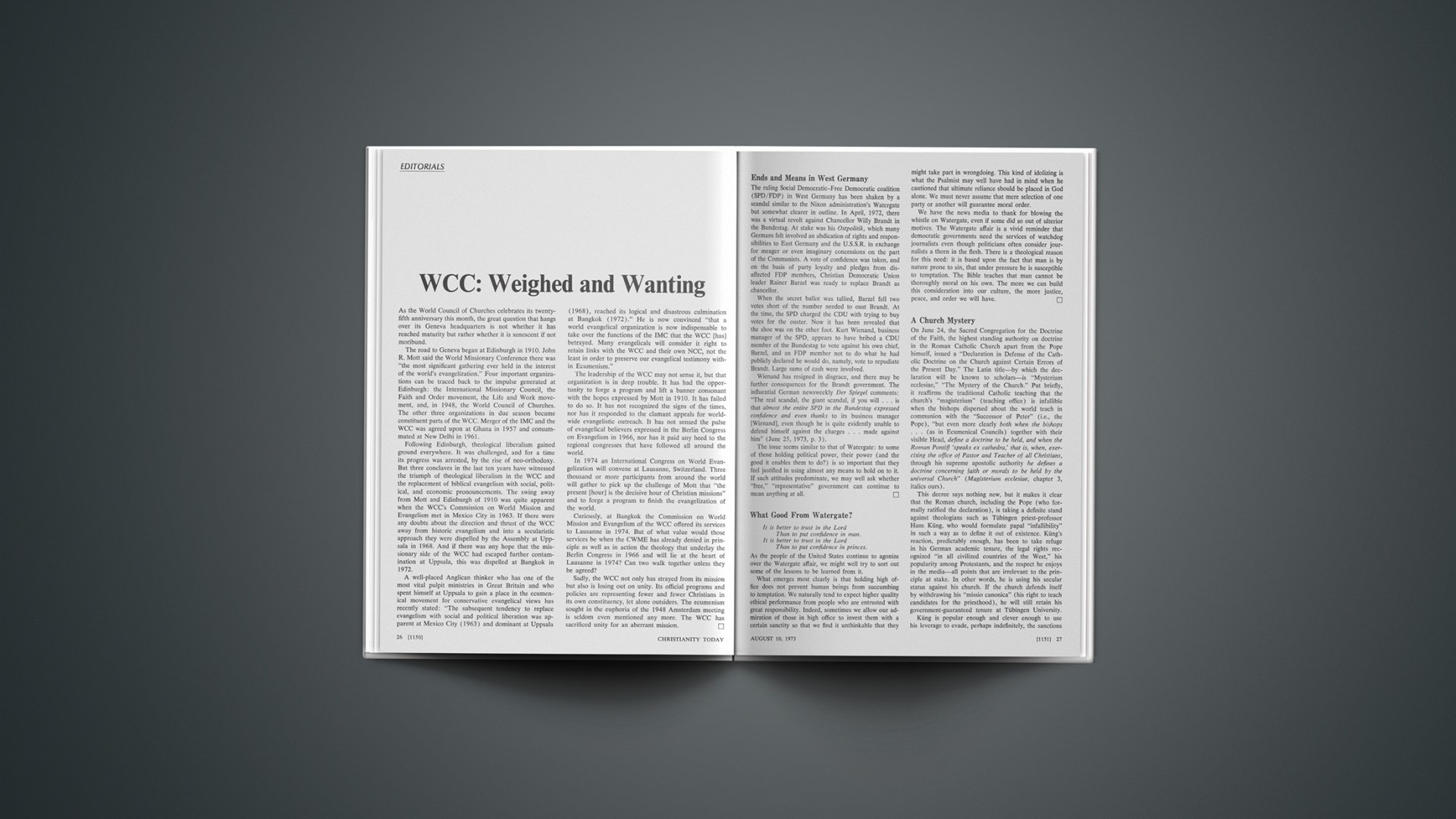Those irrepressible performers Flanders and Swann once produced a chauvinistic song that upheld the English against all Ausländer, including the Irish, Welsh, and Scots. Neatly they capsuled what was wrong with the non-English races:
It’s knowing they’re foreign
That makes them so mad.
As a foreigner who lived in England for many years and received no little kindness from the natives, I was continually bewildered by the ecclesiastical scene, more particularly by the Church of England. The latter’s attitude even to “occasional communion” was inconsistent in practice, and there was a vexatious tendency to divide Protestants into Anglicans on one hand, Nonconformists on the other—which left me dangling forlornly. At least the Romans made provision for me as a “separated brother.”
Having a magnificent grievance, then, as a member of the national Church of Scotland, I complained to my Anglican friends. They were more than a match for me, for they arranged that I contribute a regular column to one of their publications, never edited even my most outrageous utterances, but only smiled politely and said how nice it was to see themselves as others saw them. Broken on the rock of English imperturbability, I gave up after six years.
Last week my awareness of being foreign was revived with the arrival of the symposium Evangelicals Today, subtitled “13 Stock-taking essays” (Lutterworth, £ 2.60). Edited by John King, a former editor of the Church of England Newspaper, himself a fearsome toppler of evangelical icons, the book includes at least ten other Anglicans. (The two remaining essayists I cannot identify denominationally.) All thirteen writers live and work in England. That point is worth making, for despite the book’s title everything is written out of an English situation.
The reader will be left with the impression of something totally English and largely Anglican. This is a great pity, for there are weighty lessons here. John King considers that the book shows evangelicals’ readiness to “revalue themselves,” assess anew questions previously thought open and shut, acknowledge that the old ways “can no longer be considered good enough,” and “recognize that traditional evangelicalism is something less than Biblical.” The evangelical for too long shrank from facing up to problems raised by the authority of Scripture, and tended to disinherit those of differing views. His modern counterpart is racily termed “a horse of a different colour … much more concerned about the impact of the Gospel on the secular society,” and rejecting the view that the arts are an improper concern for redeemed man.
Continuing the alarming cult of showing the eminent reasonableness of today’s evangelicals, which reflects on yesterday’s, James Packer expresses some dissatisfaction with the “spotty” Anglican evangelical record in theology. The new mood is one of involvement rather than isolationism. He denies that the new evangelical tendency to ecumenical dialogue is one that “launches you down the slippery slope which ends in total theological ruin.” Packer sees as the main features of evangelical theology a biblical perspective, a trinitarian shape, a radical view of sin and grace, and a spiritual view of the Church.
Much of this attributes the start of new evangelical Anglican attitudes to an assembly at Keele in 1967. Keele is the occasion from which evangelical Anglicans date a new openness of mood, but I doubt whether they have ever launched a serious investigation into its divisive effects. Both Gordon Landreth and John Stott in their essays show sensitivity to the problem.
Perhaps to discuss the situation with reference to the respective positions of evangelical Anglicans, the Evangelical Alliance, and the British Evangelical Council would have merely an exacerbating effect. As the WCC might say, delicate negotiations are continually going on behind the scenes that would be jeopardized by publicity. Still, I would have liked to see John King devote a chapter to this burning issue. There is here a job of reconciliation to be done among British evangelicals. It would be an unspectacular, thankless task, but who better to take the first few faltering steps than those “acknowledged leaders of British evangelicalism” (publisher’s blurb) who have contributed to Evangelicals Today?
One such issue is dealt with by E. M. B. Green in his chapter “Evangelicals, Honesty and New Testament Study.” It begins with a sentence calculated to win the hearts of all comers: “Evangelicals ought to be the last people who could be arraigned for intellectual dishonesty.” This might be a trifle disingenuous: no one would dare deny it, and it makes the reader nervous about challenging some of the ensuing sections. I kept wondering whom the author was getting at when he suggests, for example, “To have a conservative view of Scripture does not mean an easy life, as if I had only to go to the book and read off all the answers.” This might be self-indictment, but I like Canon Green better in such statements as: “The most distinctive thing about the Evangelical in his approach to the Scriptures is that he does not simply go there for the problems that so engross most of his New Testament colleagues … but [goes] for food. It is here that he encounters Christ.”
It is impossible to comment on all the essays, but those of Norman Anderson, Rob Pearman, and Peter Cousins are not only thought-provoking but thoroughly non-partisan, in dealing respectively with “Secular Society, Morality and the Law,” “Evangelicals and Culture,” and “Evangelicals and Education.” Unlike certain of his co-authors, Gervase Duffield in “Evangelical Involvement” spurns the we’re-not-so-awful-after-all approach, laying about him savagely with a bludgeon as though he had old scores to settle. Sweeping, infuriating, entertaining all at once, his essay tells much more than the others of the real state of relations among his fellow-countrymen: the inordinate preoccupation with denominational wrangles, the deep-rooted prejudices, the personality clashes.
But what made this book worthwhile for me was Bryan Ellis’s “The Urban Scene”—an account of his ministry in an inner-city area. Here too the framework was Anglican, but it didn’t matter, for the failure and irrelevance of the Church to meet the living conditions outlined was so obviously not the failure of one denomination. Why did he stay in a wretched area where rewards were so few? Ellis quotes a German pastor: he stayed so that the rumors of God should not wholly die out. He tells too of a bishop who came to confirm slum boys, and after questioning them complained about their lack of prayer and Bible reading. “But it was the first time they had told the truth,” said their curate simply. As a former slum dweller myself I recognize the authenticity of the anecdotes and the irrelevance to them of all our little exercises in controversial divinity.

